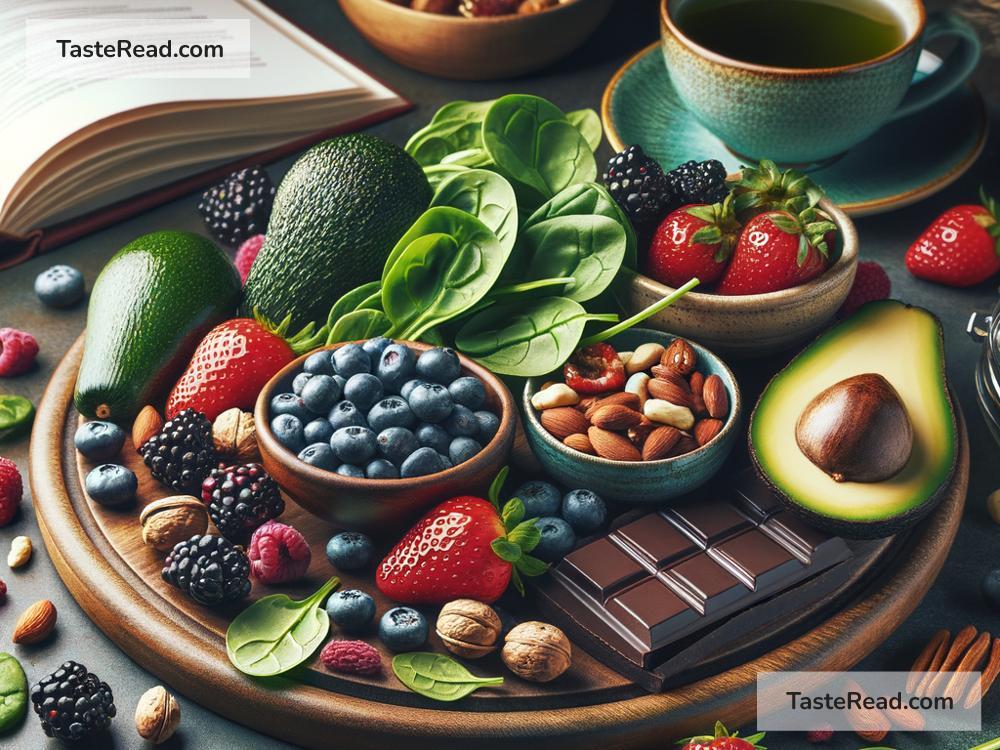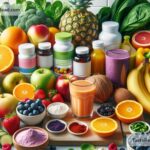How to Incorporate More Antioxidant-Rich Foods into Your Diet
Antioxidants are substances that protect your cells from damage caused by harmful molecules called free radicals. These free radicals can lead to oxidative stress, which is linked to aging, inflammation, and diseases like heart problems or cancer. The good news is that antioxidants can help! They act as tiny superheroes, fighting free radicals and keeping our bodies healthy.
Eating more antioxidant-rich foods is a simple and delicious way to support your overall health. In this article, we’ll share tips and ideas to help you incorporate these powerful nutrients into your everyday meals without overcomplicating things.
Why Are Antioxidants Important?
Before diving into how to add more antioxidant-rich foods to your plate, let’s talk about why they’re so important. Antioxidants help protect your body from damage caused by environmental factors like pollution, smoking, and sunlight, as well as normal processes like digestion. Some common antioxidants include vitamins A, C, and E, as well as minerals like selenium and compounds like flavonoids and polyphenols, which are found in plants.
Eating antioxidant-rich foods can improve your immune system, support heart health, fight inflammation, and even make your skin look better. Now that you know why antioxidants are important, let’s explore how to get more of them in your diet!
Easy Steps to Incorporate Antioxidant-Rich Foods Into Your Diet
1. Start Your Day with Fruits and Vegetables
Breakfast is a great time to load up on antioxidants. Consider adding fresh fruits, like blueberries, strawberries, or oranges, to your morning routine. These fruits contain high levels of vitamin C and other powerful antioxidants.
For example:
– Top your oatmeal or yogurt with berries.
– Blend up a smoothie made with spinach, kale, banana, and your favorite fruits.
– Scramble some eggs with antioxidant-packed veggies like tomatoes, onions, and bell peppers.
These simple swaps can set the tone for a healthy day ahead!
2. Snack Smart with Nuts and Dark Chocolate
Snacking can be another opportunity to fuel your body with antioxidants. Instead of chips or cookies, choose snacks like almonds, walnuts, or sunflower seeds. Nuts are rich in vitamin E and selenium, which are excellent antioxidants.
For a treat, dark chocolate (with at least 70% cocoa) can satisfy your sweet tooth while offering flavonoids that fight free radicals. Pair it with fresh fruit for added benefits.
3. Eat a Rainbow of Colors
One simple rule for eating antioxidant-rich foods is to aim for colorful fruits and vegetables. Each color offers unique antioxidants. For example:
– Red: Tomatoes, red peppers, strawberries (rich in lycopene and anthocyanins).
– Orange: Sweet potatoes, carrots, oranges (high in beta-carotene and vitamin C).
– Yellow: Pineapple, corn, bananas (packed with vitamin C and other nutrients).
– Green: Broccoli, spinach, avocado (filled with lutein and other antioxidants).
– Purple: Grapes, eggplant, blackberries (loaded with anthocyanins).
By eating a rainbow of foods every day, you’ll naturally get a wide variety of antioxidants.
4. Drink Antioxidant-Rich Beverages
What you drink also matters. Swap sugary sodas for drinks rich in antioxidants like green tea, black tea, or herbal teas. Green tea contains catechins, which are powerful antioxidants that support heart health and metabolism.
If you love coffee, you’re in luck—coffee is another beverage high in antioxidants. For an occasional boost, try freshly squeezed fruit or vegetable juices. Just avoid juices with added sugar.
5. Use Herbs and Spices in Your Cooking
Antioxidants aren’t just found in fruits and vegetables; they’re also in herbs and spices. Add flavor and health benefits to your meals with options like:
– Turmeric: Contains curcumin, a powerful anti-inflammatory compound.
– Ginger: Great for digestion and loaded with antioxidants.
– Cinnamon: Helps with blood sugar and provides antioxidants.
– Garlic: Known for its immune-boosting properties and sulfur-based antioxidants.
Sprinkling these spices into soups, stir-fries, or marinades is an easy way to boost antioxidant intake without changing your meal structure.
6. Add More Beans and Legumes
Beans, lentils, and other legumes are loaded with antioxidants like polyphenols and fiber, which support gut health and overall well-being. Incorporate them into your meals by making soups, salads, or dips.
For instance:
– Make a black bean or lentil chili.
– Add chickpeas to salads or roast them for a crunchy snack.
– Enjoy hummus made from antioxidant-rich tahini and garlic.
7. Go Whole with Whole Grains
Whole grains, like quinoa, brown rice, and oats, are better for your health than refined grains because they contain more antioxidants and fiber. Opt for whole-grain bread, pasta, and cereals whenever possible.
A Few Important Tips
- Avoid Overcooking: Cooking vegetables at high heat for long periods can destroy some antioxidants. Steaming, roasting, or eating raw are better options.
- Stay Hydrated: Antioxidants work best when your body is hydrated, so drink plenty of water throughout the day.
- Shop Smart: Choose fresh, seasonal, or frozen produce. Organic fruits and vegetables may have higher antioxidant levels.
Final Thoughts
Incorporating antioxidant-rich foods into your diet doesn’t have to be complicated. By making small, intentional choices—like adding fruits to your breakfast, snacking on nuts, drinking green tea, or cooking with herbs—you can enjoy their health benefits every single day.
Remember, your plate is a canvas, and antioxidant-rich foods are the vibrant paints that contribute to your overall well-being. Start small, have fun experimenting, and give yourself the gift of good health by nourishing your body with antioxidants.
Your future self will thank you!


